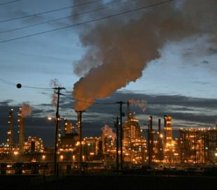Environmental Issues of Spain
Most of the mainland Spain landscape is dominated by a high plateau called the Meseta Central. The Meseta is skirted and crossed by a number of mountain ranges such as: the Pyrenees (which extend into Navarre, the Basque Country, Aragon and Catalonia) the Sistema Central (Madrid, Castile-Leon, Castile-La Mancha) the Sierra Nevada (in Andalusia) and the Cordillera Cantábrica (extending through Galicia, Asturias, Cantabria, Castile-Leon and the Basque Country). It is also made up of coastal plains, and lowland river valleys. In general, the regions of Spain can be subdivided into four main groups: the Meseta Central, other mountain systems, lowland areas and islands.
Environment - current issues: pollution of the Mediterranean Sea from raw sewage and wastes from the offshore production of oil and gas; water quality and quantity nationwide; air pollution; deforestation; desertification
The holm oak and the Dehesa desert are under threat. An invasive fungi called phytophthora from Australia found its way to the Dehesa causing a disease known as sudden oak death, aided by drought, several insects and other fungi. The biodiversity based around this habitat could be seriously affected.
Extensive forests are now limited to northern Spain because of centuries of unplanned cutting. Fires cause a loss of 700, 000 to 1, 000, 000 hectares of forestland each year. With more than 8, 500 plant species, Spain has the richest vegetation in Europe.
However, the government has begun a reforestation project. An average of 92, 000 hectares (227, 000 acres) arforested annually. Erosion affects 18% of the total land mass of Spain.
Air pollution is also a problem in Spain. In 2006, Industrial carbon dioxide emissions totaled 223.2 million metric tons (1 metric ton = about 2, 200 pounds), ranking Spain 20th worse pollution compared to the other nations of the world. Industrial and agricultural sources contribute to the nation's water pollution problem.










